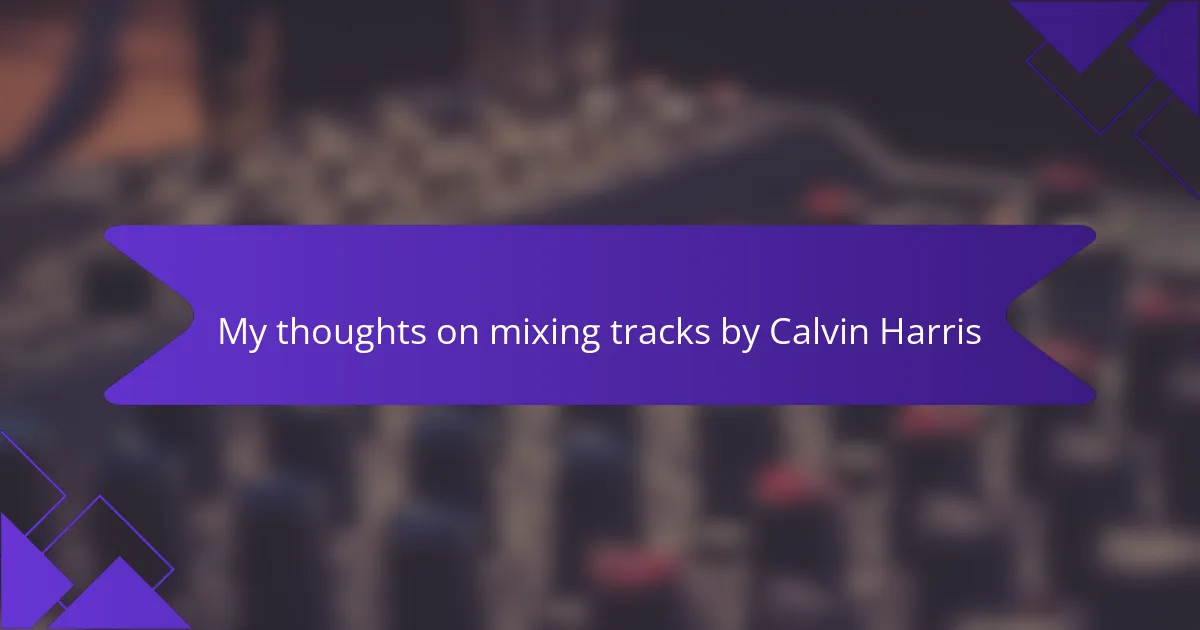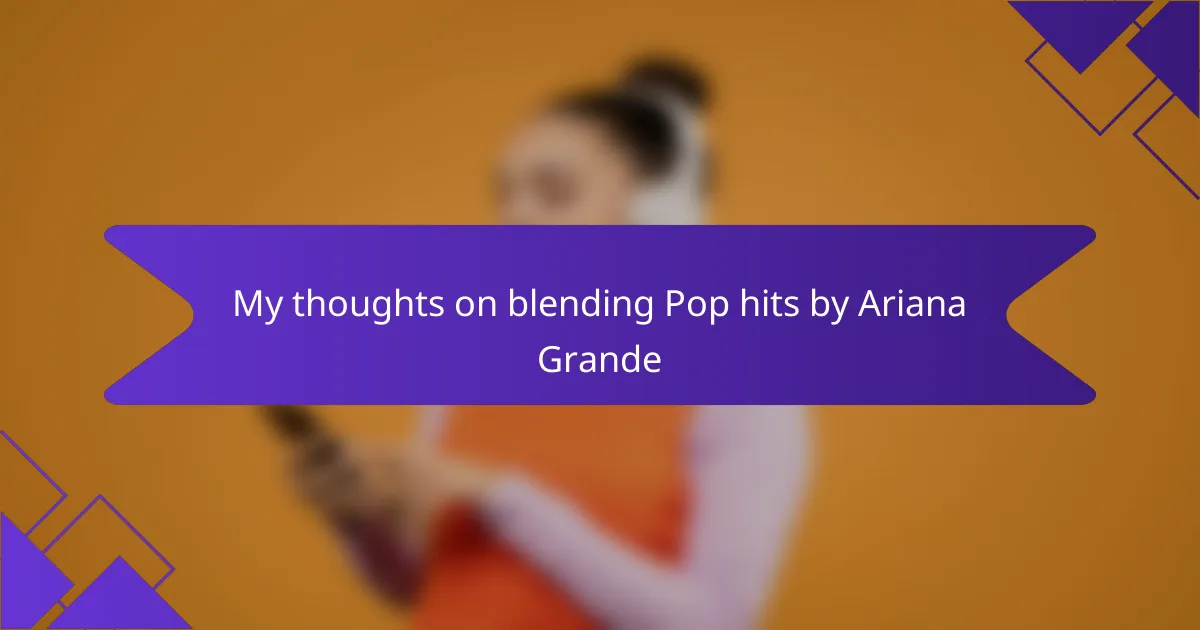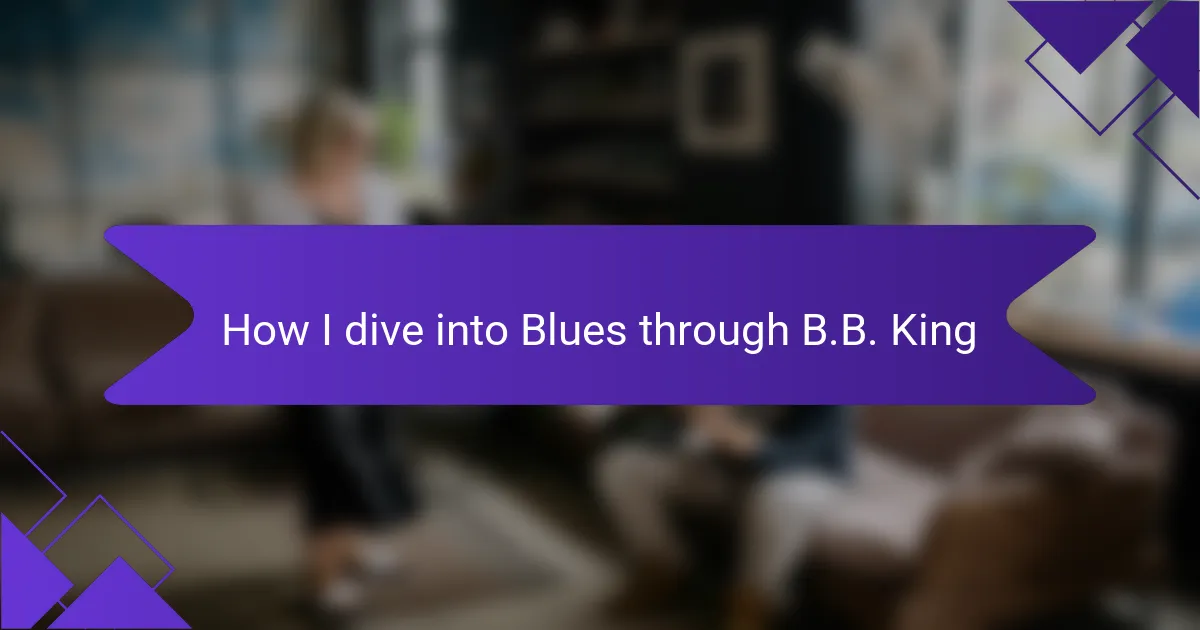Key takeaways
- Trap music originated in the late 1990s in the Southern United States, characterized by heavy bass and dark themes reflecting real-life struggles.
- Future has significantly shaped trap’s evolution, blending melodic elements with hard-hitting sounds and influencing many artists in the genre.
- The genre has transformed DJ entertainment, enabling versatile mixes and creating high-energy atmospheres at events, making it a staple in modern clubs.
- Trap music resonates with a diverse audience, uniting fans through its infectious rhythms and relatable lyrical themes.
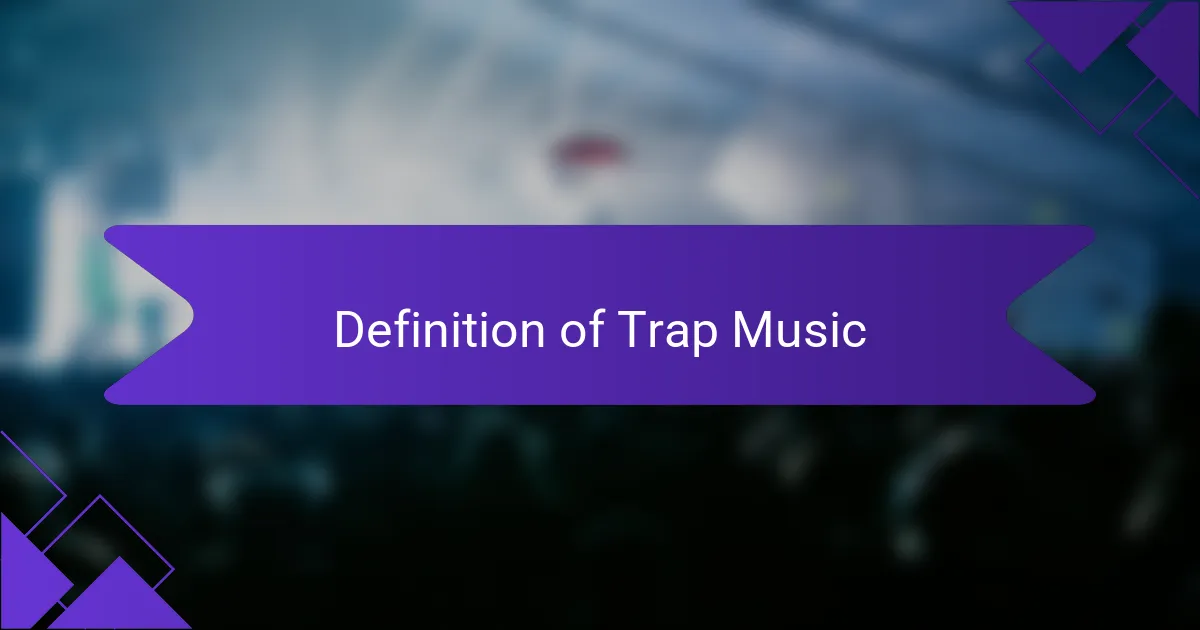
Definition of Trap Music
Trap music is a subgenre of hip-hop that originated in the Southern United States during the late 1990s. Characterized by its heavy use of 808 drum machines, hi-hats, and synths, trap music blends aggressive beats with lyrical content that often explores life in the streets, struggles, and resilience.
When I first encountered trap music, it hit me with raw energy that was hard to ignore. The sounds were unlike anything I had heard; the beats just had this way of drawing me in. Have you felt that surge of adrenaline while listening to a trap track? It’s a powerful experience.
Lyrically, trap often delves into darker themes, reflecting both the trials and triumphs of life. This duality speaks to a wide audience, offering listeners both an escape and a connection to real-world issues. What I appreciate most about trap is how it has evolved; it holds a mirror to society while pushing musical boundaries.
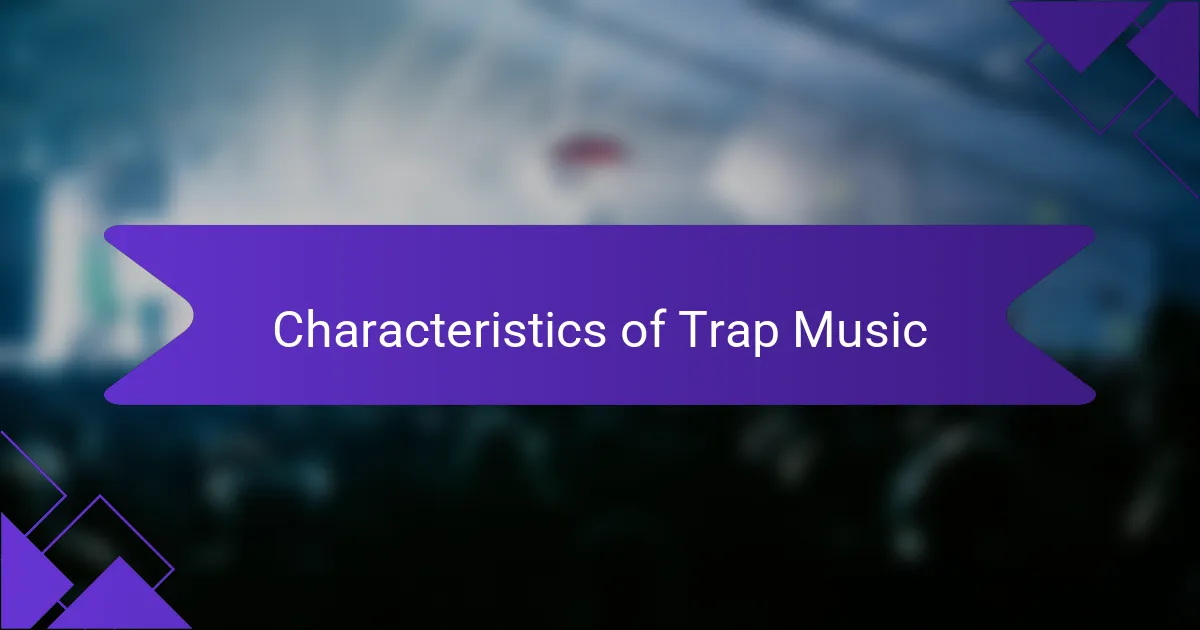
Characteristics of Trap Music
Trap music, with its gritty beats and hard-hitting basslines, has a distinct sound that resonates deeply with listeners. I remember the first time I heard a trap track; it was electrifying. The production often features rapid hi-hats, heavy sub-bass, and layers of synths that create an immersive experience. It’s not just music; it’s a vibe that pulls you into a world of raw emotion and storytelling.
One characteristic that stands out to me is the use of repetitive hooks, which make the tracks incredibly catchy. Artists like Future have mastered this technique, allowing listeners to easily connect with the lyrics and beats. I find myself humming these hooks long after the song ends, demonstrating the power of trap music’s infectious rhythms.
- Heavy use of 808 kick drums for a deep bass feel
- Rapid hi-hat patterns that create urgency and energy
- Dark, moody lyrics often reflecting real life struggles and aspirations
- Repetitive choruses that enhance memorability
- Diverse influences, blending elements from hip-hop, EDM, and pop
These unique characteristics make trap music both captivating and relatable, creating a universal language that speaks to countless fans.

Evolution of Trap Music
Trap music has undergone a significant transformation since its inception, evolving from the gritty sounds of the South to a mainstream phenomenon that resonates globally. In my experience, this shift has led to artists like Future redefining the genre, pushing boundaries with their distinctive sound. I still remember the first time I heard “Mask Off” blasting from a DJ’s speakers—it was that perfect blend of melody and hard-hitting bass that captured the room’s energy.
Over the years, Future has played a pivotal role in shaping trap’s identity, influencing countless up-and-coming artists. Here are some key points reflecting this evolution:
- Production Techniques: Early trap relied on simple 808 beats and hi-hats, while now it often incorporates lush melodies and intricate layering.
- Lyricism: The storytelling aspect has shifted from street narratives to more diversified themes, from personal struggles to mainstream success.
- Collaborations: There’s a noticeable increase in cross-genre collaborations, showing trap’s influence on pop, R&B, and even rock music.
- Cultural Impact: Trap music has transcended the music scene, impacting fashion, language, and overall youth culture, creating a lifestyle that resonates with many.
- Digital Presence: The rise of platforms like SoundCloud has democratized music distribution, allowing new talent to emerge and experiment within the trap framework.
Reflecting on this journey, I can’t help but feel a sense of nostalgia for the raw energy of early trap, while simultaneously appreciating the innovative directions it’s taking today. It’s exciting to witness how trap continues to evolve and, in turn, shape the musical landscape as we know it.
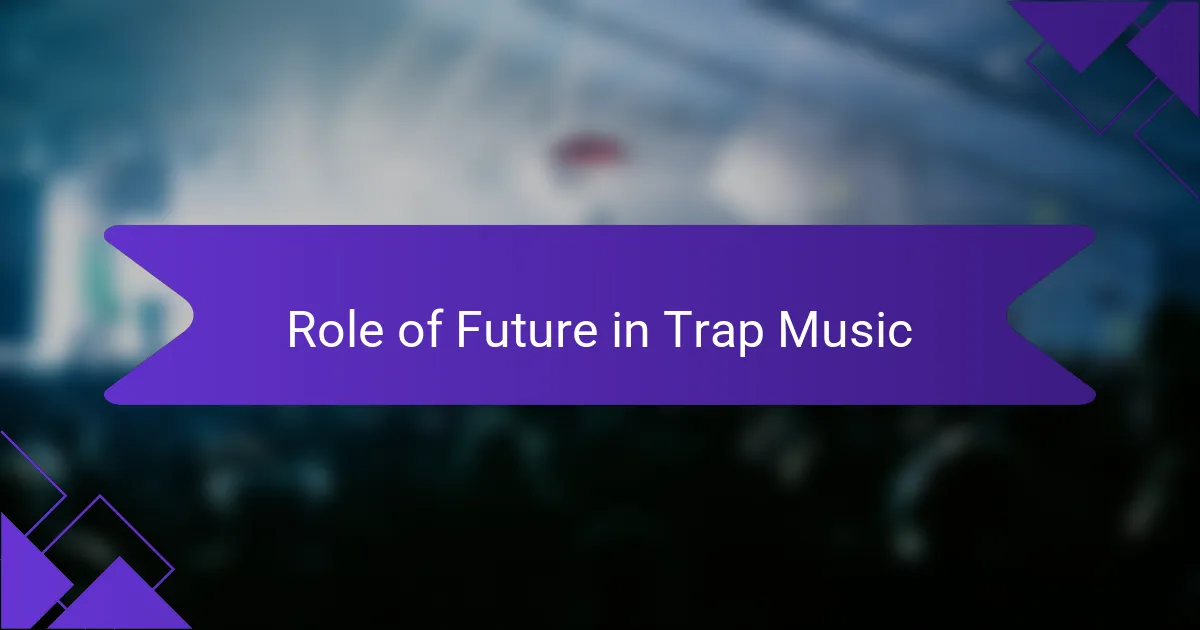
Role of Future in Trap Music
Future has undeniably played a pivotal role in shaping the sound and culture of trap music. His distinctive blend of melodic hooks with heavy bass has become a defining characteristic of the genre. I remember the first time I heard “Jumpman”; it felt like a sonic experience that transformed my perspective on hip-hop. Future’s ability to weave his personal struggles and triumphs into his lyrics resonates deeply with fans, making his music relatable yet aspirational.
One aspect that truly stands out to me is how Future embraces the raw emotions of life experiences. His tracks often reflect both the highs of success and the lows of hardship, which keeps listeners engaged and connected. In my experience, when I’m DJing, songs like “Mask Off” always evoke a palpable reaction from the crowd, embodying the very essence of trap’s emotional depth.
| Aspect | Future’s Influence |
|---|---|
| Musical Style | Innovative blend of trap with melodic elements |
| Lyrical Themes | Exploration of personal struggles and success |
| Impact on the Genre | Defined modern trap sound, influencing countless artists |

Impact of Trap Music on DJ Entertainment
Trap music has significantly transformed the landscape of DJ entertainment, offering a fresh sound that resonates with younger audiences. I remember the first time I heard a Future track at a club; the bass hit me like a wave, and the crowd’s energy was electric. It became clear how trap’s distinct beats and catchy hooks made it a staple for DJs, who now curate tracks that keep the momentum alive all night long.
As trap music continues to evolve, DJs are embracing its versatility. They seamlessly blend it with other genres, creating innovative remixes that capture diverse crowds. This adaptability not only showcases the DJ’s skill but also highlights the communal experience of music.
- Trap’s heavy basslines and tempo are perfect for high-energy parties.
- DJs can easily mix trap with hip-hop, EDM, and even pop songs.
- The genre’s catchy hooks make it easy for audiences to connect and sing along.
- Future’s tracks often feature memorable phrases, making them ideal for crowd engagement.
- Trap music creates a unique atmosphere, allowing DJs to innovate with their sets.

Personal Experience with Trap Music
When I first heard trap music, it was like a breath of fresh air. The rhythm was infectious, and the beats had a certain energy that resonated with my experiences as a DJ. I remember spinning Future’s “Dirty Sprite” at a local gig, and the crowd’s response was electric. It really brought the energy in the room to a whole new level.
Over the years, I’ve watched trap music evolve tremendously, with Future leading the charge in reshaping its sound. His ability to blend melodic elements with hard-hitting bass has influenced countless artists, making trap not just a genre, but a cultural movement. I’ve seen it transform from underground vibes to mainstream dominance, and it’s fascinating to witness its impact on both the dance floor and broader music landscape.
- Trap music blends traditional hip-hop with electronic influences, creating a unique listening experience.
- Future’s innovative approach to melody and rhythm has set a new standard for the genre.
- The community surrounding trap music is diverse, drawing listeners from various backgrounds, which reflects its broad appeal.
- Events featuring trap music often create an exhilarating atmosphere, encouraging a shared sense of unity among fans.
